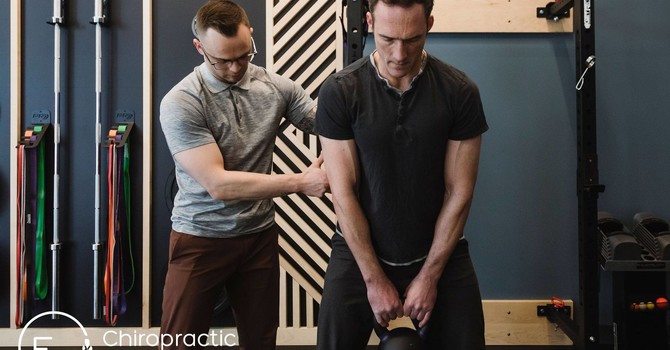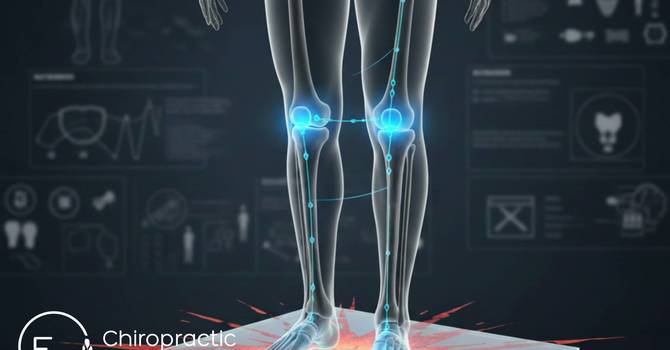
You’ve probably heard someone say, “It’s my old injury acting up again.” Maybe it’s your shoulder that flares up every few months, or that low-back tweak that never completely went away.
The truth is, old injuries don’t always stay healed—especially when the underlying movement patterns, scar tissue, or joint mechanics that caused them in the first place were never fully corrected.
As a Saskatoon Chiropractor, I often meet active adults who are frustrated that pain from years ago has returned out of nowhere. At E3 Chiropractic + Wellness, we help patients understand that pain returning isn’t random—it’s your body signaling that something still needs attention.
Let’s unpack why “old injuries” resurface and what you can do to stop the cycle for good.
Why Pain Can Return Years After an Injury
When an injury heals, the tissue may repair—but the body’s movement memory often doesn’t.
Here’s what typically happens:
-
Compensation patterns form. Other muscles or joints take over the job of the injured area, creating imbalance.
-
Scar tissue and stiffness limit proper motion, subtly changing how you move.
-
Nerve sensitivity can remain heightened, even after the tissue itself has healed.
Over time, these factors cause micro-stress to build until—months or years later—you feel pain again in the same spot.
Related Reading: Why You Shouldn't Ignore Morning Stiffness: What It Says About Your Spine and Joints
The Role of Scar Tissue and Muscle Imbalance
After an injury, your body produces scar tissue to “patch” damaged fibers. While this helps with short-term healing, it’s less flexible and less elastic than the original tissue.
If not properly mobilized, that area becomes a weak link in your movement chain. Surrounding muscles must work harder, leading to:
-
Tightness in compensating areas (often the opposite side of the body)
-
Uneven loading during workouts or daily tasks
-
Recurrent strains or joint irritation
That’s why a sprained ankle from 10 years ago can quietly affect your hip, knee, or back today.
Read Next: The Daily Habits That Are Sabotaging Your Mobility
How Stress and Posture Keep Old Injuries Alive
Modern life doesn’t make recovery easy. Sitting for long periods, chronic stress, and limited movement keep muscles tight and joints restricted.
This constant tension prevents full circulation and tissue healing—essentially keeping the injury “on standby".
When you add a tough workout, long drive, or stressful week, that old injury re-emerges as pain, stiffness, or fatigue.
Explore: Stress, Tension, and Pain: The Mind-Body Connection You Might Be Ignoring
How Chiropractic Care Helps Break the Cycle
At E3 Chiropractic + Wellness, we look beyond where you hurt—we look at how you move. Chiropractic care helps retrain your body to function the way it was meant to.
Our approach includes:
-
Chiropractic adjustments – restore joint mobility and correct mechanical imbalances.
-
Soft-tissue therapy – release scar tissue and improve flexibility in old injury sites.
-
Movement retraining – targeted exercises rebuild coordination and prevent compensation.
-
Lifestyle and recovery coaching – posture, stress, sleep, and hydration habits all influence healing.
When you restore mobility, balance, and nerve communication, the body can finally move on from old pain patterns.
Learn More:
Real Patient Story
“Jason,” a 45-year-old weekend hockey player, came in complaining of mid-back pain that “always comes back every winter.” He’d separated his shoulder nearly 15 years ago and assumed it had nothing to do with his current problem.
After a movement assessment, we found his shoulder had limited rotation, forcing his spine and ribs to twist excessively during skating. With chiropractic adjustments, soft-tissue therapy, and shoulder-mobility drills, Jason’s back pain disappeared—and stayed gone.
Sometimes the site of the pain isn’t the source of the problem.
Practical Steps to Prevent Old Injuries from Returning
-
Stay consistent with mobility work. Focus on full-range motion, not just stretching.
-
Strengthen your weak links. Address stability in supporting muscles (hips, glutes, core, shoulders).
-
Hydrate and recover. Healthy tissues need fluid and movement to stay resilient.
-
Check your ergonomics. Desk setup, driving posture, and sleep position can reactivate old patterns.
-
Schedule regular check-ins. Small maintenance adjustments keep old problems from resurfacing.
Final Thoughts
Pain from an “old injury” isn’t a mystery—it’s information. It tells you that something in your movement, posture, or stress pattern needs attention.
Key Takeaway: Healing doesn’t end when the pain fades. True recovery means restoring full motion, balance, and nerve function so your body can perform without limitation.
If your old injuries keep coming back, click HERE to schedule a free discovery call with E3 Chiropractic + Wellness—your trusted Saskatoon Chiropractor.





